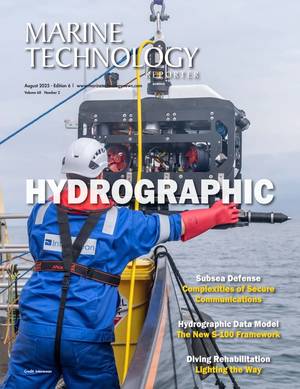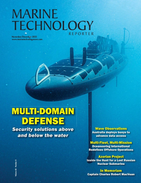Marine Technology Reporter Blogs - waveglider
Abrolhos Islands - Reefs, Humpback Whales and Oil

Portuguese explorers were the first to arrive at the Abrolhos National Marine Park., having named the islands and sailed along the Caravelas Rivers since 1503. The name Abrolhos is short for open your eyes in Portuguese, and is an indication of the dangers to navigation in the area, which has numerous reef and rock formations just shy of the surface of the sea or even awash, and is dotted with shipwrecks. In 1987, a small remnant humpback whale population was discovered during the Marine Park’s implementation and thus Abrolhos was suggested as the species’ main “nursery” ground on the Western South Atlantic. The Humpback Whale Project was then created to promote research and protection for these mammals in Brazil.
Abrolhos Islands - Reefs, Humpback Whales and Oil
Portuguese explorers were the first to arrive at the Abrolhos National Marine Park., having named the islands and sailed along the Caravelas Rivers since 1503. The name Abrolhos is short for open your eyes in Portuguese, and is an indication of the dangers to navigation in the area, which has numerous reef and rock formations just shy of the surface of the sea or even awash, and is dotted with shipwrecks. In 1987, a small remnant humpback whale population was discovered during the Marine Park’s implementation and thus Abrolhos was suggested as the species’ main “nursery” ground on the Western South Atlantic. The Humpback Whale Project was then created to promote research and protection for these mammals in Brazil.
Wave Glider Capabilities and Uses

The Wave Glider is the first unmanned autonomous surface vehicle (ASV) to use wave energy for propulsion. Its ability to stay out at sea gathering data for long periods of time, through all weather conditions, and communicate real-time data from the surface of the ocean, assures it has a wide array of uses both for academia and for the offshore industry. First introduced in 2009, Wave Gliders have since traveled more than 300,000 nautical miles, set a world record for longest distance traveled by an autonomous vehicle, and been deployed on more than 100 customer missions ranging from the Canary Islands and the UK in the Atlantic Ocean to Australia in the Pacific Ocean to the Arctic.

 August 2025
August 2025



